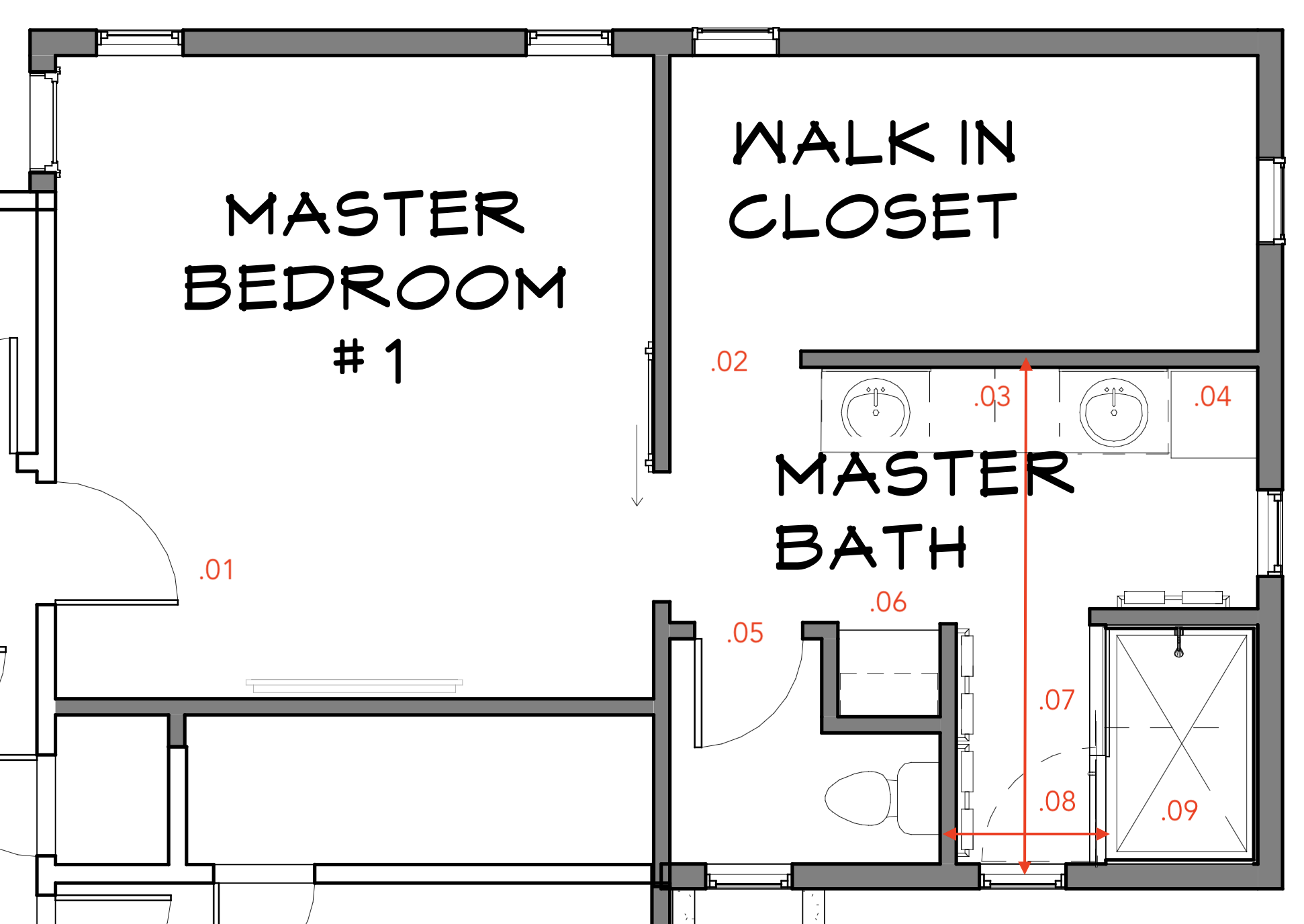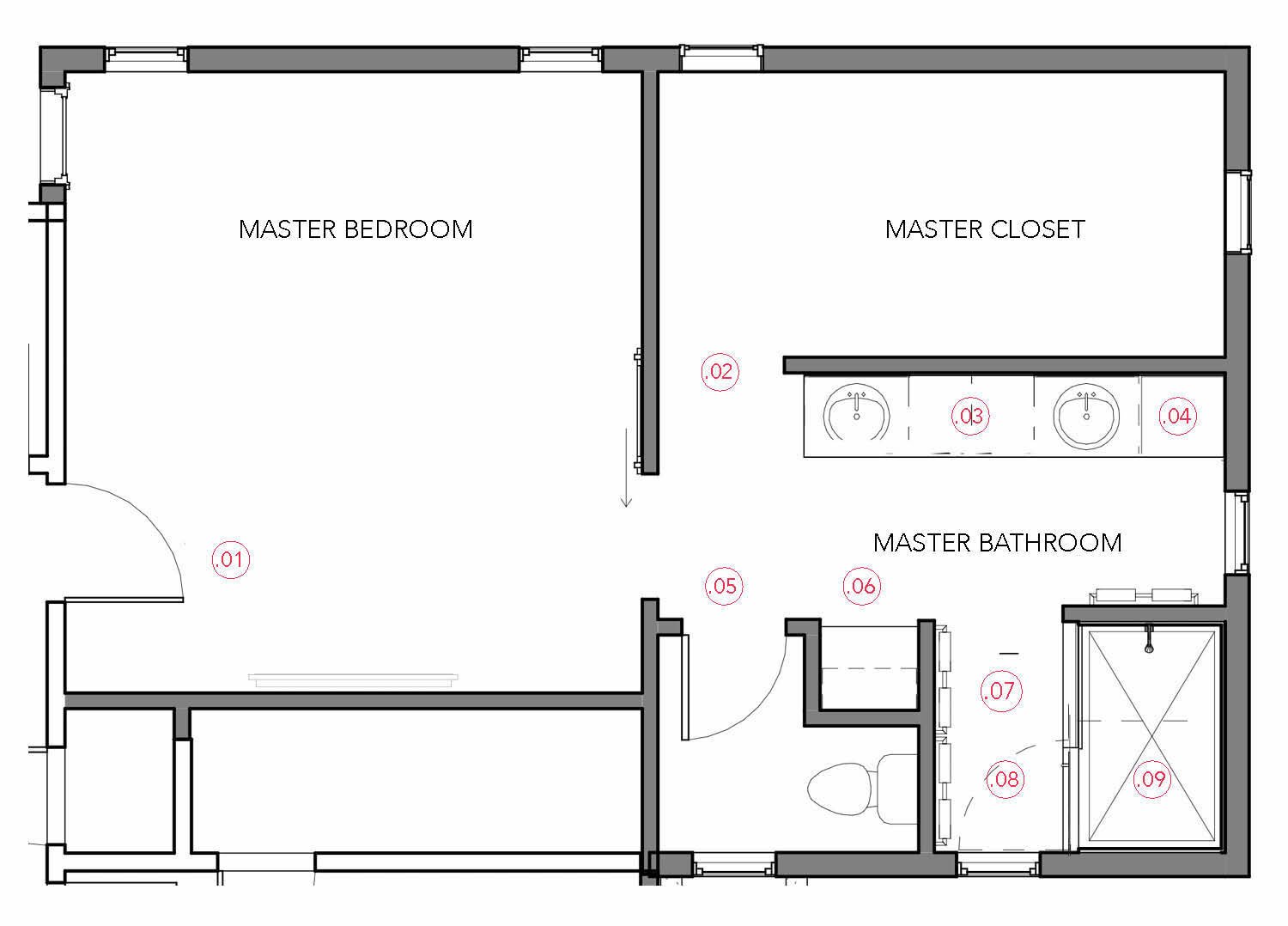Master Bedroom Bathroom Closet Design Considerations

Creating a functional and stylish master bedroom bathroom closet combination requires careful planning and consideration. The design should prioritize both functionality and aesthetics, seamlessly integrating the bathroom, bedroom, and closet spaces.
En-Suite, Walk-Through, and Separate Entrances
The layout of the master bedroom bathroom closet combination can significantly impact its functionality and flow. Common layouts include en-suite, walk-through, and separate entrances.
- An en-suite bathroom is directly accessible from the bedroom, often with a shared wall. This layout provides privacy and convenience but can be space-constrained.
- A walk-through bathroom connects the bedroom and closet, allowing access to both spaces from the bathroom. This layout maximizes space utilization but may compromise privacy.
- Separate entrances to the bathroom and closet provide flexibility and privacy. This layout is ideal for larger spaces, allowing for independent access to each area.
Maximizing Storage Space
Efficient storage is crucial for a functional master bedroom bathroom closet.
- Vertical storage is key, utilizing shelves, drawers, and hanging rods to maximize vertical space. This allows for organized storage of clothes, linens, and bathroom essentials.
- Customizable shelving and drawers can be tailored to specific needs, accommodating items of different sizes and shapes. This ensures efficient utilization of space and easy access to belongings.
- Pull-out drawers and baskets provide easy access to items stored in the back of the closet. This minimizes the need to move items around, simplifying the organization process.
- Mirrors can create an illusion of larger space, reflecting light and visually expanding the area.
Incorporating Natural Light and Ventilation
Natural light and ventilation are essential for a comfortable and healthy master bedroom bathroom closet.
- Windows provide natural light and ventilation, improving the overall ambiance of the space. Consider using frosted or patterned glass for privacy while allowing natural light to filter through.
- Skylights can introduce natural light into the closet, particularly for spaces without windows. However, ensure proper insulation and ventilation to prevent heat buildup.
- Exhaust fans are crucial for removing moisture and odors from the bathroom and closet. Proper ventilation helps maintain a healthy environment and prevents mold growth.
Choosing the Right Materials
Material selection is vital for a durable, moisture-resistant, and aesthetically pleasing master bedroom bathroom closet.
- Moisture-resistant materials, such as waterproof plywood, tile, and vinyl flooring, are essential for areas prone to moisture. These materials prevent damage and maintain the integrity of the space.
- Durable materials, such as solid wood, stainless steel, and glass, withstand daily use and maintain their appearance over time. These materials contribute to the longevity of the closet.
- Aesthetics are equally important, considering the overall design theme of the bedroom and bathroom. Choose materials that complement the existing décor and create a cohesive and stylish space.
Popular Master Bedroom Bathroom Closet Floor Plan Features: Master Bedroom Bathroom Closet Floor Plans

Master bedroom bathroom closet floor plans are becoming increasingly popular as homeowners seek to create luxurious and functional spaces within their homes. These plans often incorporate features that enhance convenience, organization, and overall aesthetic appeal.
Walk-in Closets within Master Bedroom Bathrooms, Master bedroom bathroom closet floor plans
A walk-in closet located within the master bedroom bathroom offers a convenient and private space for dressing and storing clothing and accessories. This design eliminates the need to travel between separate rooms, streamlining the morning routine.
Master Bathroom Vanity Designs
Vanity designs play a crucial role in the functionality and aesthetic of a master bathroom.
- Double Sinks: Double sinks provide ample counter space and allow for simultaneous use, ideal for couples or families. They also offer a sense of spaciousness and enhance the overall bathroom experience.
- Freestanding Tubs: Freestanding tubs are a luxurious addition to a master bathroom, adding a touch of elegance and providing a relaxing space for soaking. They are often placed in a central location, becoming a focal point of the room.
- Walk-in Showers: Walk-in showers offer easy access and a spacious showering experience. They can be customized with various features such as multiple showerheads, body jets, and built-in seating.
Incorporating Smart Home Technology
Smart home technology can enhance the functionality and convenience of a master bedroom bathroom closet.
- Motion-Sensing Lights: Motion-sensing lights automatically illuminate the closet when someone enters, providing convenient lighting without the need for manual activation.
- Smart Mirrors: Smart mirrors can display information such as the time, weather, and news, while also offering features like Bluetooth connectivity and voice control.
- Automated Closet Systems: Automated closet systems use technology to organize and manage clothing, maximizing storage space and minimizing clutter.
Flooring Materials
Choosing the right flooring material for a master bedroom bathroom closet is essential, considering factors such as durability, water resistance, and aesthetics.
- Tile: Tile is a popular choice for bathroom closets due to its durability, water resistance, and easy maintenance. It comes in various styles and colors, allowing for customization and design flexibility.
- Laminate: Laminate flooring offers a durable and water-resistant option at a more affordable price point. It comes in various styles, including wood-look laminates, replicating the appearance of natural wood.
- Luxury Vinyl Plank (LVP): LVP is a durable and water-resistant flooring option that offers a realistic wood-look finish. It is also relatively easy to install and maintain.
Luxurious Finishes and Fixtures
Luxury finishes and fixtures elevate the aesthetic and functionality of a master bedroom bathroom closet.
- Quartz Countertops: Quartz countertops offer durability, stain resistance, and a variety of colors and patterns, enhancing the overall design of the closet.
- Custom Cabinetry: Custom cabinetry provides ample storage space and allows for personalized organization. It can be designed to fit the specific needs and preferences of the homeowner.
- High-End Lighting: High-end lighting fixtures, such as crystal chandeliers or pendant lights, add a touch of luxury and enhance the overall ambiance of the closet.
Master Bedroom Bathroom Closet Floor Plan Inspiration

Designing a master bedroom bathroom closet that seamlessly blends functionality and style requires inspiration and a clear vision. This section explores different floor plan layouts, provides practical guidance on maximizing space, and offers unique design features to enhance your master suite.
Master Bedroom Bathroom Closet Floor Plan Layouts
To illustrate various layout options, here’s a table showcasing different master bedroom bathroom closet floor plan layouts, their dimensions, and key features:
| Layout | Dimensions (sq ft) | Features | Walk-in Closet | 100-150 | Ample space for hanging clothes, shelves, drawers, and a dressing area. | Reach-in Closet | 30-50 | Compact and ideal for smaller bedrooms, suitable for hanging clothes and shelves. | L-Shaped Closet | 60-100 | Offers flexibility in utilizing corner space, ideal for maximizing storage capacity. | U-Shaped Closet | 80-120 | Creates a dedicated dressing area within the closet, maximizing space and privacy. |
|---|
Designing a Functional and Space-Maximizing Master Bedroom Bathroom Closet Floor Plan
A well-designed master bedroom bathroom closet prioritizes functionality and maximizes space. Consider these tips for creating a custom floor plan:
– Measure the space accurately: Obtain precise measurements of the available area to ensure accurate planning.
– Identify storage needs: Determine the types of items you need to store, such as clothes, shoes, accessories, and toiletries.
– Plan for hanging space: Allocate sufficient hanging space for different types of garments, including long dresses, coats, and shirts.
– Incorporate shelves and drawers: Utilize shelves for folded clothes, accessories, and seasonal items. Drawers are ideal for smaller items like underwear, socks, and jewelry.
– Consider a dressing area: If space permits, create a dedicated dressing area within the closet, complete with a mirror and seating.
– Maximize vertical space: Utilize the vertical space effectively by incorporating tall shelves and hanging rods.
– Optimize corner space: Utilize corner space efficiently by incorporating corner shelves, drawers, or hanging rods.
– Choose the right door style: Opt for sliding doors or bi-fold doors to save space and maximize accessibility.
Examples of Master Bedroom Bathroom Closet Floor Plans with Unique Features
Here are some examples of master bedroom bathroom closet floor plans that incorporate unique features:
– Closet with a dressing area: This layout includes a dedicated dressing area within the closet, complete with a vanity mirror, seating, and ample lighting. This creates a luxurious and private space for getting ready.
– Closet with a private balcony: A closet with a private balcony provides a tranquil and scenic space for relaxation and enjoyment. It’s ideal for enjoying morning coffee or a relaxing evening retreat.
Incorporating Personal Style and Preferences
Your master bedroom bathroom closet should reflect your personal style and preferences. Here are some tips for incorporating your unique taste:
– Choose materials and finishes: Select materials and finishes that complement the overall design of your bedroom. Consider using wood, metal, glass, or a combination of materials.
– Add decorative elements: Incorporate decorative elements like wallpaper, paint, or lighting fixtures to personalize the space.
– Select functional accessories: Choose functional accessories like hangers, shelves, and organizers that align with your style and storage needs.
– Consider lighting: Adequate lighting is crucial for a functional and aesthetically pleasing closet. Use a combination of overhead lighting and accent lighting to highlight specific areas.
